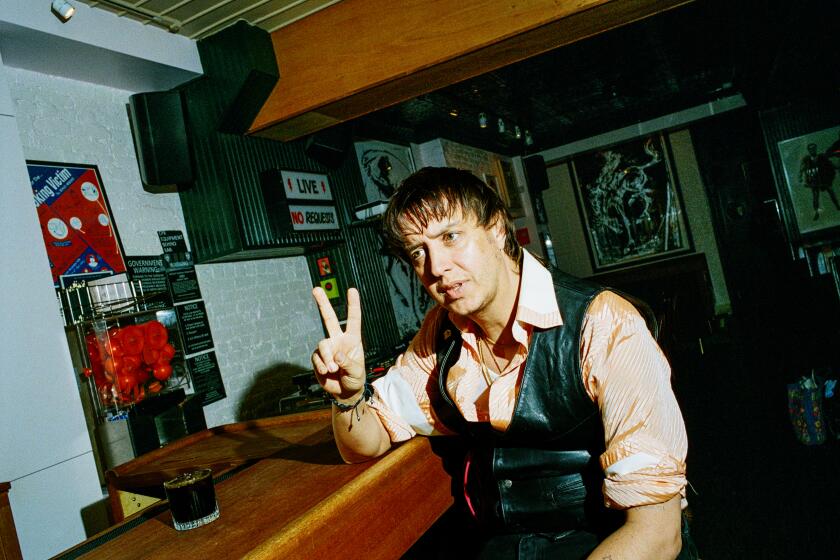Gurtu Blends Indian Music With Jazz
Most American jazz musicians in the ‘90s have focused strongly upon restoring the mainstream styles of the ‘50s and ‘60s. Ironically, at the same time, many jazz players from other parts of the world have moved away from the mainstream, taking the music into intriguing areas of exploration and discovery.
Indian percussionist Trilok Gurtu, who appeared with his quartet at LunaPark Wednesday night, has never been quite like any other drummer. A veteran of the crossover group Oregon and a frequent associate of such cutting-edge performers as Charlie Mariano, Don Cherry, Jan Garbarek and John McLaughlin, Gurtu blends the complex rhythms of Indian music with the urgency and swing of jazz.
At LunaPark, the uniqueness of his approach was instantly apparent from a visual point of view alone. Seated low to the ground, surrounded by a variety of small percussion instruments, he generated a bewildering array of sounds from a relatively minimal collection of equipment.
But what made his playing so fascinating was its constant aura of surprise. Grooving along in a contemporary, funk-based rhythm, he tossed in rapid-fire bass drum hits contrasted with the blurred jangling of tiny temple bells. A segment on tabla drums was interrupted by explosive cymbal crashes. And just when he seemed to have struck every possible combination, he abandoned the percussion altogether and sang long passages of crisply articulated syllables--a kind of scat singing based upon the Indian classical music technique of applying syllabic sounds to each percussive accent.
Viewed in isolation, it was a remarkable performance in itself. But Gurtu’s group--French keyboardist Andy Emler, Scottish saxophonist Tommy Smith and bassist Chris Minh Doky--was also a revelation. Individually and collectively, they brought a stimulating freshness to everything they played. Emler’s colorful keyboard work linked almost symbiotically to Gurtu’s drumming, Doky produced several elegant, well-crafted solos, and Smith had the edgy, aggressive qualities of a player on the rise.
Best of all, the Gurtu ensemble made its envelope-stretching music without losing touch with the essential swing and improvisational flow of jazz. In doing so, it provided a model for musical open-mindedness and creativity that some of the decade’s more tradition-bound young players would do well to consider.
More to Read
The biggest entertainment stories
Get our big stories about Hollywood, film, television, music, arts, culture and more right in your inbox as soon as they publish.
You may occasionally receive promotional content from the Los Angeles Times.






